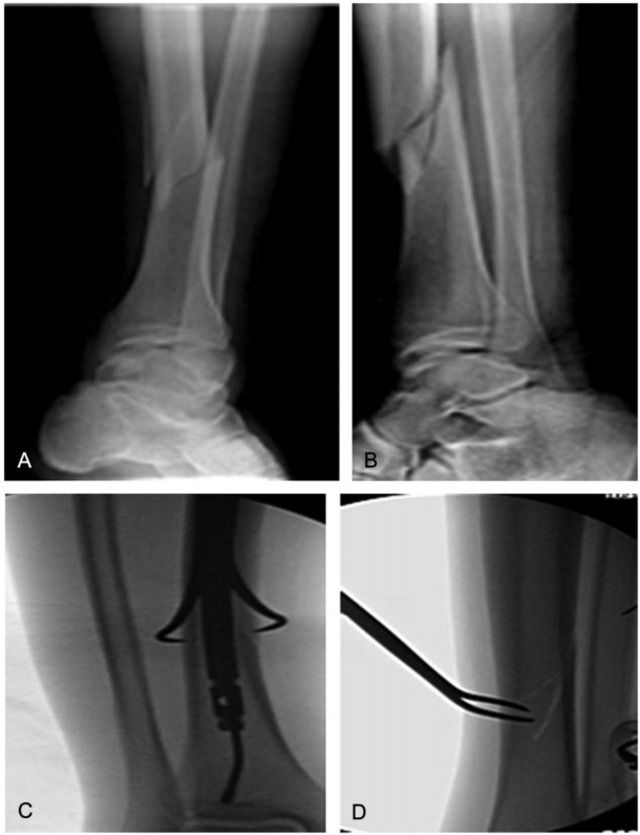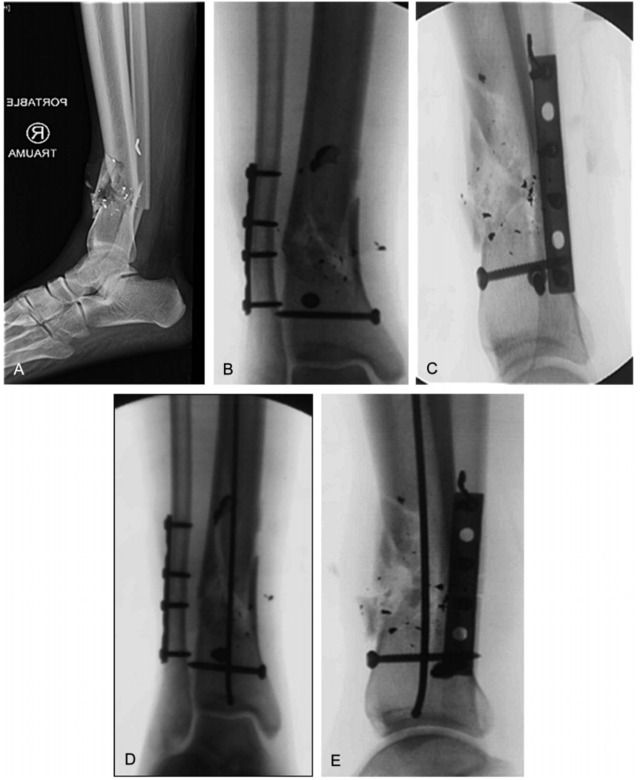The two lines of the poem “cut and set internal fixation, closed set intramedullary nailing” aptly reflect the attitude of orthopedic surgeons towards the treatment of distal tibia fractures. To this day, it is still a matter of opinion whether plate screws or intramedullary nails are better. Regardless of which is really better in God’s eyes, today we are going to make an overview of the surgical tips for intramedullary nailing of distal tibial fractures.
Preoperative “spare tire” set
While routine preoperative preparations are not necessary, it is recommended to have a spare set of screws and plates in case of unforeseen circumstances (e.g., hidden fracture line that prevents placement of locking screws, or human error that aggravates the fracture and prevents immobilization, etc.) that may arise from the use of intramedullary nailing.
The 4 bases for successful repositioning
Due to the oblique anatomy of the distal tibial metaphysis, simple traction may not always result in successful reduction. The following points will help to improve the success rate of repositioning:
1. take preoperative or intraoperative orthopantomograms of the healthy limb to compare and determine the extent of fracture reduction on the affected side.
2.use a semi-flexed knee position to facilitate nail placement and fluoroscopy
3.use a retractor to maintain the limb in place and length
4.Place Schanz screws in the distal and proximal tibia to aid in fracture reduction.
7 Details of Assisted Reduction and Immobilization
1. Place the guide pin correctly into the distal tibia by using an appropriate assistive device or by pre-bending the tip of the guide pin prior to placement.
2. use a skin-tipped resurfacing forceps to place intramedullary nails in spiral and oblique fractures (Figure 1)
3. use a rigid plate with monocortical fixation (tabular or compression plate) in open reduction to maintain reduction until the intramedullary nail is inserted
4. narrowing of the intramedullary nail channel using block screws to correct angulation and channel to improve the success of intramedullary nail placement (Figure 2)
5. depending on the type of fracture, decide whether to use fixation screws and temporary blocking fixation with Schnee or Kirschner pins.
6. prevent new fractures when using blocking screws in osteoporotic patients
7. fixate the fibula first and then the tibia in the case of a combined fibula fracture to facilitate tibial repositioning
Figure 1 Percutaneous Weber clamp repositioning Oblique views (Figures A and B) suggest a relatively simple distal tibia fracture that lends itself to fluoroscopic percutaneous minimally invasive sharp-nosed clamp repositioning that causes little damage to soft tissue
Fig. 2 Use of blocking screws Fig. A shows a highly comminuted fracture of the distal tibial metaphysis followed by a posterior angulation deformity, with residual inversion deformity after fibular fixation despite correction of the sagittal posterior angulation deformity (Fig. C) (Fig. B), with one blocking screw placed posteriorly and one laterally on the distal end of the fracture (Figs. B and C), and medullary dilatation after placing the guide pins to further correct the coronal deformity (Fig. D), while maintaining sagittal equilibrium (E)
6 points for intramedullary fixation
- If the distal bone of the fracture is sufficiently bony, the intramedullary nail can be fixed by inserting 4 screws in multiple angles (to improve the stability of multiple axes), so as to improve the structural rigidity.
- Use intramedullary nails that allow the inserted screws to pass through and form a locking structure with angular stability.
- Use thick screws, multiple screws, and multiple planes of screw placement to distribute the screws between the distal and proximal ends of the fracture to strengthen the fixation effect of the intramedullary nail.
- If the intramedullary nail is placed too far so that the pre-bent guidewire prevents distal tibial expansion, then a non-pre-bent guidewire or distal non-expansion can be used.
- Retain the blocking nail and plate until the fracture is reduced, unless the blocking nail prevents the intramedullary nail from spreading the bone or the unicortical plate damages the soft tissue.
- If the intramedullary nails and screws do not provide adequate reduction and fixation, a percutaneous plate or screw may be added to increase the stability of the intramedullary nails.
Reminders
More than 1/3 of distal tibia fractures involve the joint. In particular, fractures of the distal tibial stem, spiral tibial fractures, or associated spiral fibular fractures should be investigated for intra-articular fractures. If so, the intra-articular fracture needs to be managed separately before placement of an intramedullary nail.
Post time: Oct-31-2023












